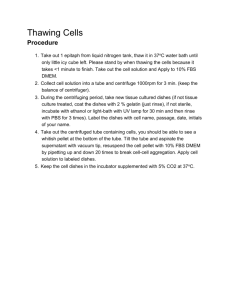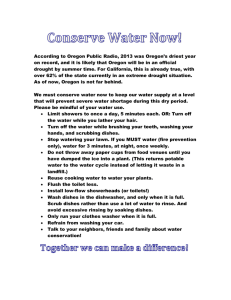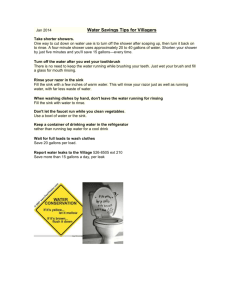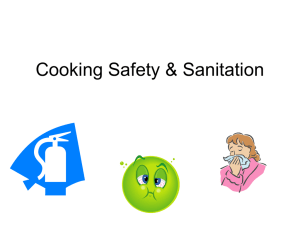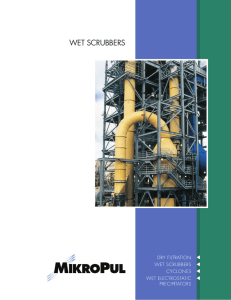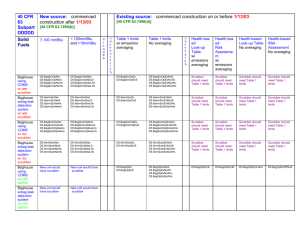Overview
advertisement
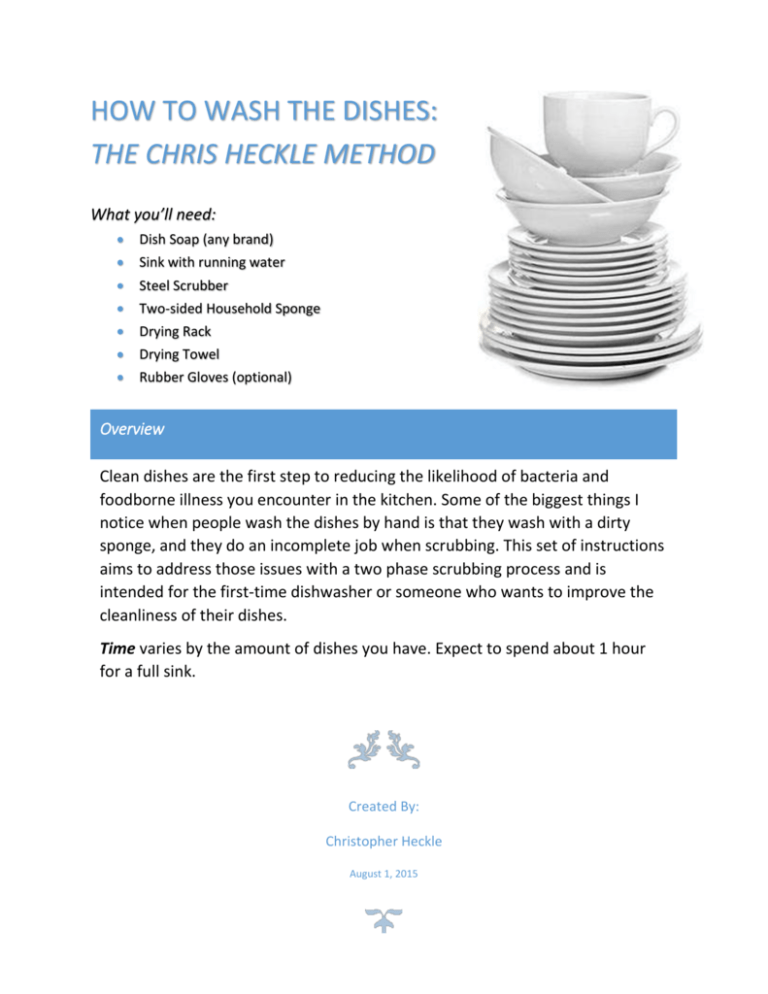
HOW TO WASH THE DISHES: THE CHRIS HECKLE METHOD What you’ll need: Dish Soap (any brand) Sink with running water Steel Scrubber Two-sided Household Sponge Drying Rack Drying Towel Rubber Gloves (optional) Overview Clean dishes are the first step to reducing the likelihood of bacteria and foodborne illness you encounter in the kitchen. Some of the biggest things I notice when people wash the dishes by hand is that they wash with a dirty sponge, and they do an incomplete job when scrubbing. This set of instructions aims to address those issues with a two phase scrubbing process and is intended for the first-time dishwasher or someone who wants to improve the cleanliness of their dishes. Time varies by the amount of dishes you have. Expect to spend about 1 hour for a full sink. Created By: Christopher Heckle August 1, 2015 WARNINGS! Read through the instructions in their entirety before you begin. Hot water can scald. For your own safety keep the water to a Read through the instructions in their entirety before you begin. comfortable temperature. Hot water can scald. For your own safety keep the water to a Be careful when handling knives or other sharp items. comfortable temperature. Handle all fragile items with care to reduce the risk of breaking. Be careful when handling knives or other sharp items. Handle all fragile items with care to reduce the risk of breaking. Instructions Tip: Steps 3 through 7 should be completed for each item individually. From 8 to the end the instructions are for the entire lot of items you have washed. To save time, you should complete steps 3 and 4 as well as 6 and 7 for all items at once. This means you don’t have to switch between the sponge and scrubber for every item making the process more efficient. STEP 1 Turn on the sink. Apply soap to the steel scrubber and run it under the sink to get it wet. Rub the steel scrubber together with itself to create soap suds. STEP 2 Begin to rinse the dishes, one at a time, under the running water to moisten any residue that may be dried on. Set them back into the sink to await the next step. STEP 3 One at a time, begin to scrub each item using the steel scrubber. Apply enough firm pressure when scrubbing to remove all dried food residue. Go over surfaces more than once especially small crevices where dirt can be hiding. Tip: Use short, quick hand motions as you scrub and try to make a circular pattern when scrubbing flat surfaces. No visible residue should be left after the steel scrubbing phase. STEP 4 Rinse the item after using the steel scrubber. Inspect the item to make sure no spots were missed. Place the item back in the sink after rinsing. STEP 5 Rinse out the steel scrubber and place it aside. Apply soap and water to the sponge. Rub the sponge together with itself to make soap suds. STEP 6 Using the rough side of the sponge, scrub the item again using the same small and quick hand motions as with the steel scrubber. Make sure to scrub the entire item even if you can’t see any stains on the surface. Tip: Don’t be afraid to go over the same surface multiple times as this can only make the item cleaner. It is better to scrub the entire item more than once than to miss a spot. STEP 7 Rinse the item and your hands thoroughly so no soap is left behind and no soap can transfer from your hands to the item. Place the item into the drying rack. Tip: Make sure to put all bowls and cups facing downward so water can drain properly. All dishes should be placed as close to perpendicular to the drying rack back as possible to allow water to run off. Try not to group silverware together to closely otherwise they may not dry. STEP 8 After completing steps 1 through 7 for all items, let everything dry for about one hour. In the meantime, put the sponge, steel scrubber, and soap away. Rinse out the sponge and leave it by the sink. If you want to wipe the sink clean, do not use the sponge! You want the sponge to stay clean for the next wash. STEP 9 After air drying, dry each item with a clean dish towel. Make sure to dry each item thoroughly. If you have a lot of things to dry you may need to use more than one towel. Mold and mildew may grow if cups are put away without being completely dry. Tip: While this method seem a bit excessive, you can be sure your dishes are clean and it’s good habit to be thorough when doing any task regardless of how menial it may be. Plus, you do not want to be embarrassed when guests come over and there is leftover food on the dishes or food crust in their water cups.

